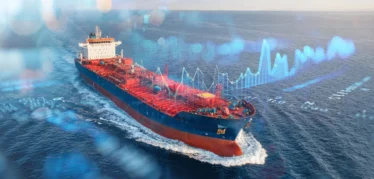While the next decade is slated to be packed with promising potential for commercial maritime shipping, it will likely be filled with the same outsized market volatility owner-operators, commodities traders, and tonnage charterers deal with every day. The need to continuously assess and manage exposure against the backdrop of ever-changing freight and bunker prices isn’t going anywhere. But exposure management today, which is by and large a disparate and sometimes even manual process, is expected to be eclipsed by a dynamic and digitally-connected approach.
As we’ve explored in our whitepaper, “What Will 2030 Mean for Maritime Shipping?,” transformative changes over the next ten years are projected to be enhanced automation, more pervasive connectivity, and faster access to meaningful data. How could these promising changes affect exposure management? Let’s take a closer look.
1) Exposure management and the future of automation.
Leaps in processing speed and connectivity are projected to continue over the next decade, and they are already enabling a powerful human-machine partnership. For exposure management in commercial maritime shipping, this human-machine partnership is expected to unlock radical time savings when it comes to assessing freight and bunker risk. For exposure management, this human-machine partnership enables professionals to harness automation to instantly assess their daily position inclusive of paper hedges, then use their expertise and understanding of the business’s priorities to make decisions that mitigate exposure to freight fluctuations, bunker fluctuations, or both.
2) Exposure management and the future of integration.
Integration across systems and data sources is nothing new, but not all integrations are created equal. Your core commercial solution should be built upon a foundation of standardized, contextual, and market-linked data. This will help ensure you are supported over the next decade, as more pervasive systems integration usher in waves of new transparency, standardization, and coordination. For exposure management, a more advanced approach to integration makes available robust contractual data to generate daily positions, coupled with timely market data to assess freight and fuel rates. Together, these internal and external data sources help facilitate an accurate, operationally-linked, and market-connected picture of risk at all times. Enabled by robust integrations, decision-makers can systematically assess their performance against the market at large or specific benchmarks.
3) Exposure management and the future of real-time insights.
Outsized market volatility has a substantial financial impact on owner-operators, who are exposed through the contracts they form and the bunker purchases they make, as well as tonnage charterers, whose long-term freight contracts make them vulnerable to future fluctuations in freight rates. Over the next decade, the maritime shipping ecosystem is forecasted to witness a glut of data transform into contextual and usable insights. When it comes to exposure management, this transformation means developing new ways to act upon information about market exposure where and when it is most relevant — including when contracts are evaluated and fixed, when voyages progress, when significant fluctuations in freight and bunker rates occur, and when voyage performance is assessed. Those who can assess changing exposure and perform relevant stress tests will be in a position of advantage should the reasonable worst-case scenario materialize. The real value of proactive exposure management lies in the individual decision-maker’s ability to use this knowledge to make an impact on the organization.
Meet the Future of Exposure Management Today with VIP
As a dynamic platform for the commercial management of marine cargoes and fleets, the Veson IMOS Platform (VIP) provides a suite of flexible tools that key stakeholders on both sides of the marine contract can utilize to make informed and proactive decisions. The VIP Trading & Risk module enables marine stakeholders on both sides of the contract to proactively assess and manage their exposure to the ever-changing freight and bunker rates. Are you ready to transform your approach to exposure management? Connect with us to learn more.



 Aidan Williams
Aidan Williams
 Antoine Grisay
Antoine Grisay
 Josh Luby
Josh Luby